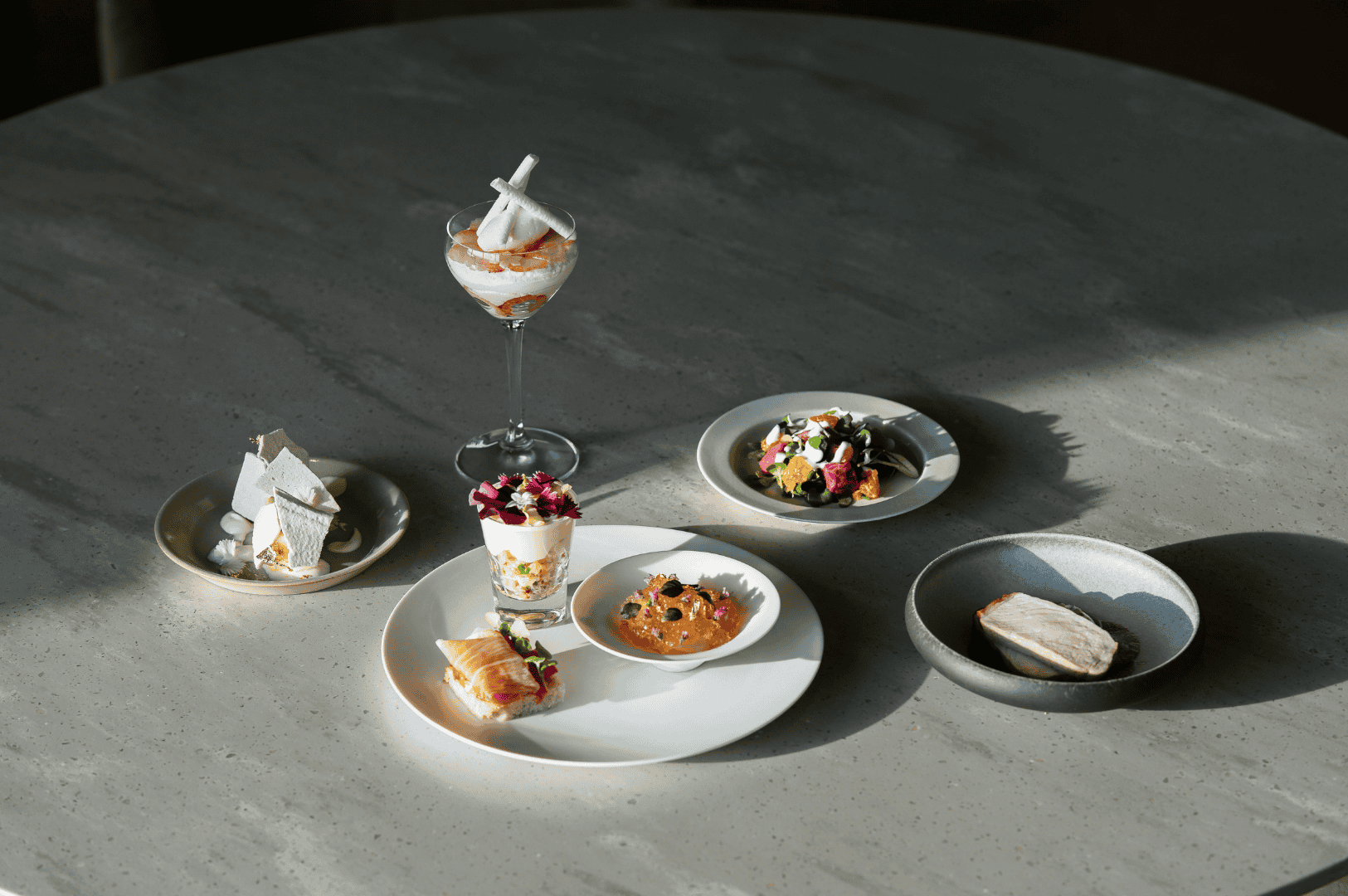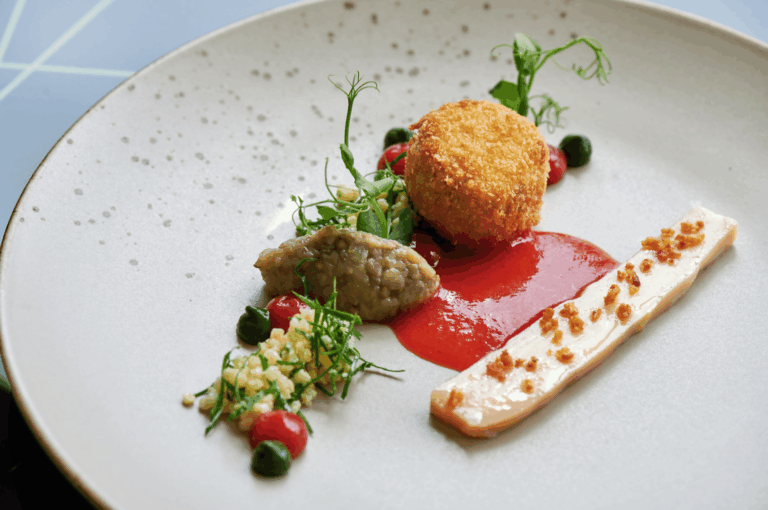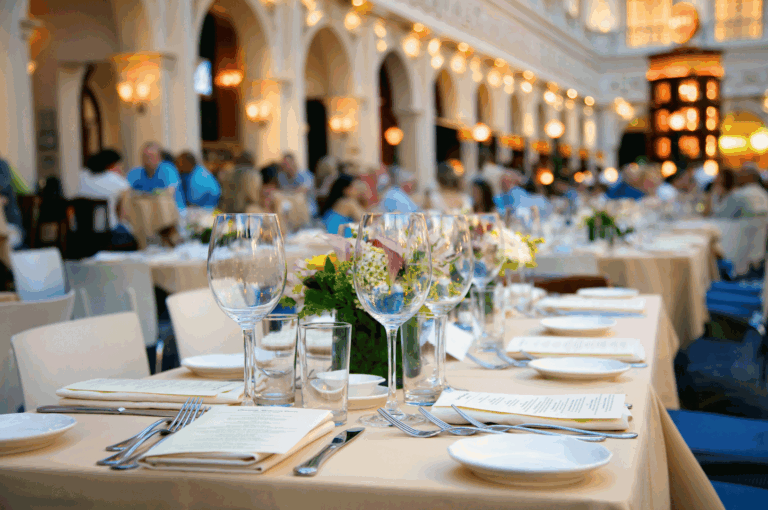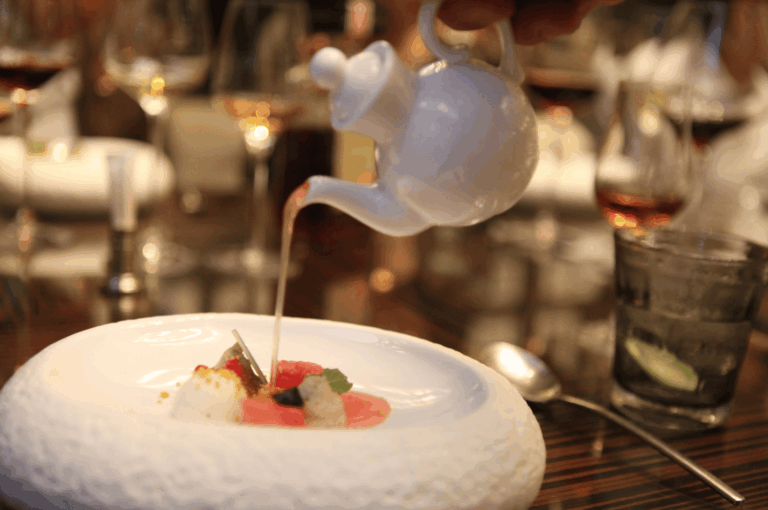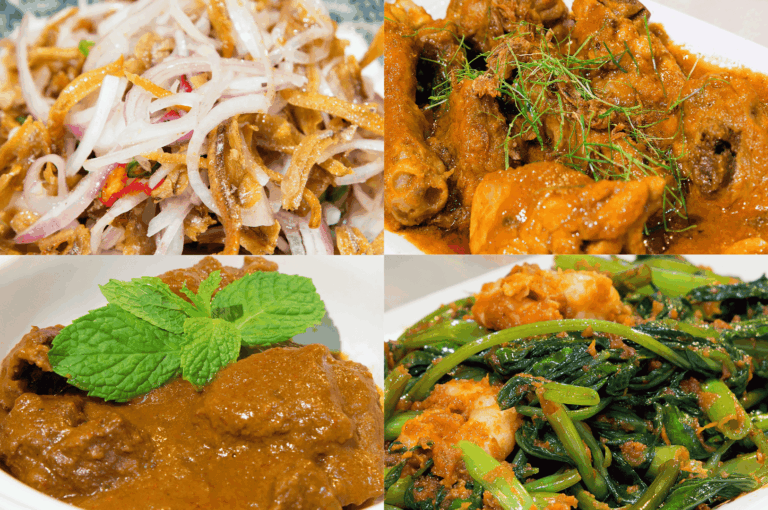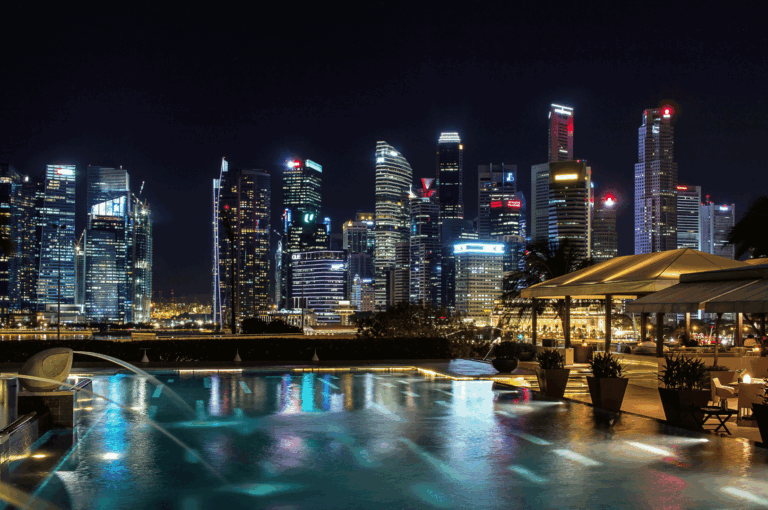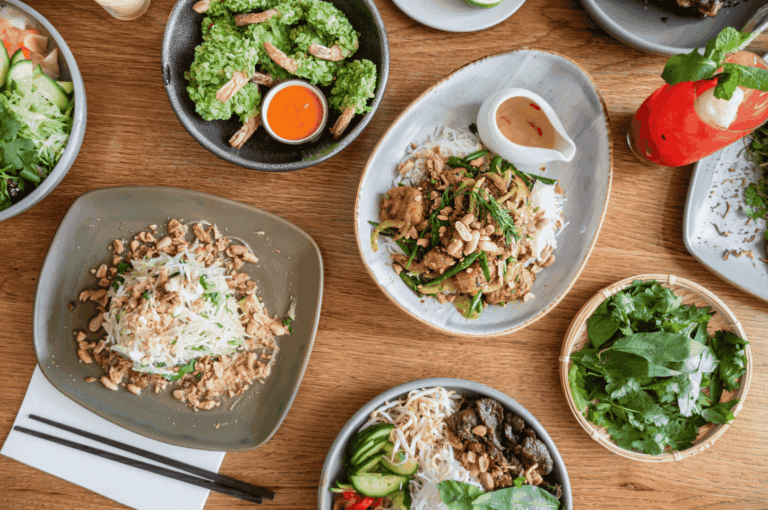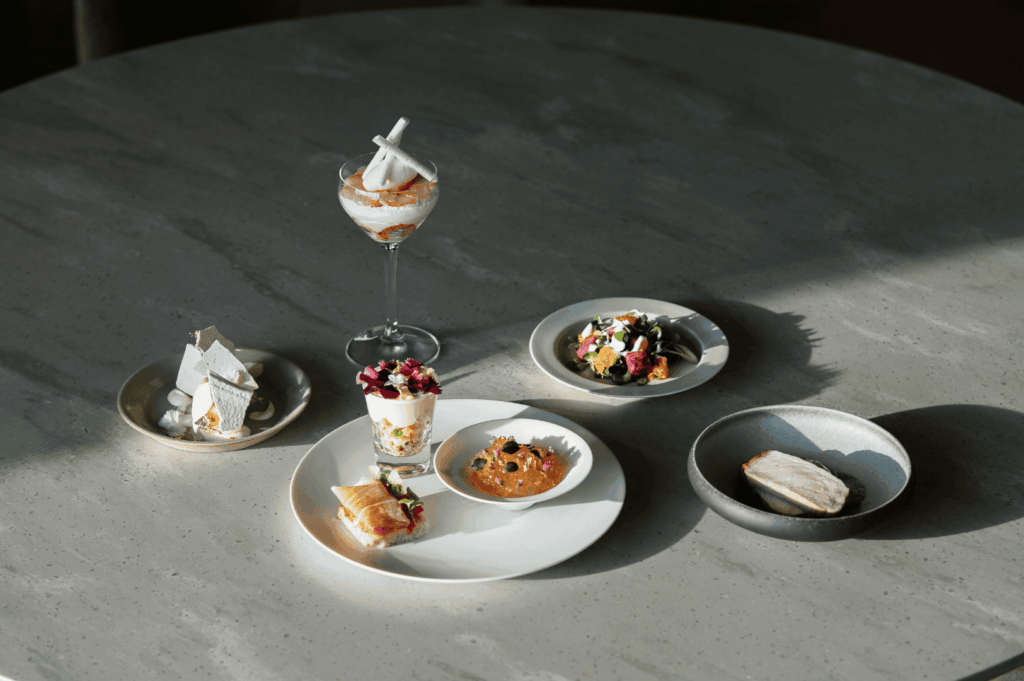
For professionals in the global hospitality industry, few accolades hold the same weight and prestige as a Michelin star. It is a definitive symbol of gastronomic excellence, a beacon that draws discerning diners from around the world.
The Michelin Guides began as a resource for travelers and have evolved into the definitive authority for the world’s best restaurants, renowned for their curated lists and trusted recommendations. This special journey to earning a star is often seen as a mysterious, almost unattainable quest.
However, achieving a star, while incredibly challenging, is a real aspiration. It is the culmination of unwavering dedication, technical precision, and a profound passion for creating unforgettable dining experiences. This pursuit is not just about the award; it’s a deep commitment to excellence in every single detail, from the finest ingredients to the final interaction with guests.
For any aspiring young chef or restaurateur, understanding the evolution of Michelin dining in Singapore is the first step toward transforming a lofty dream into a tangible reality. This michelin star restaurant guide aims to demystify that process and serve as a tool for discovering the best restaurants for food enthusiasts and travelers.
Introduction to Fine Dining
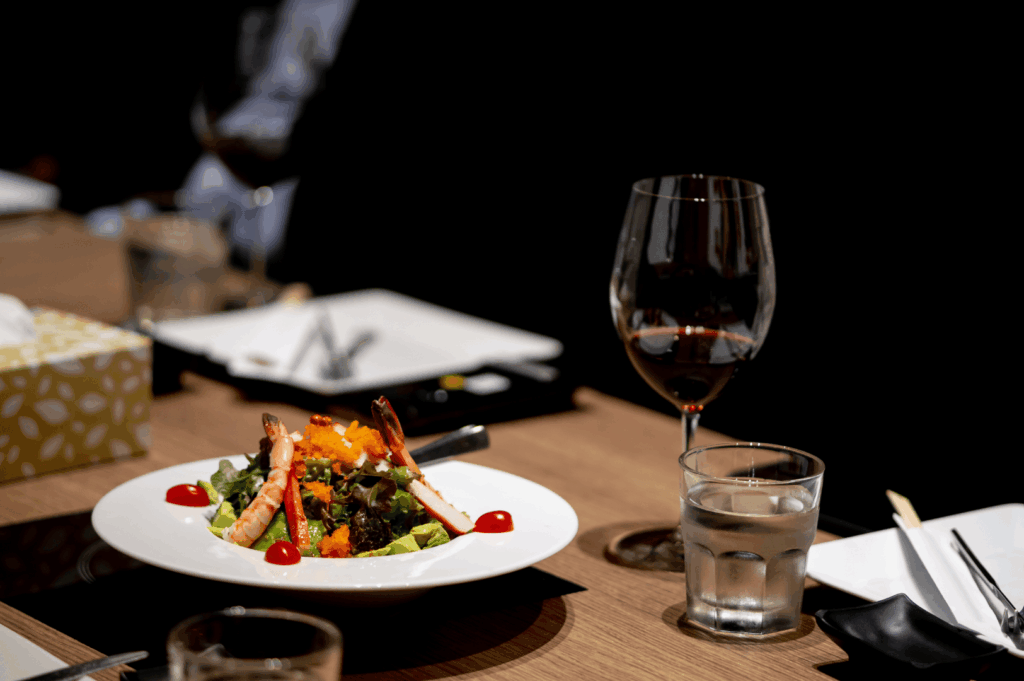
Fine dining represents the pinnacle of culinary artistry, where every detail—from ambiance to plating—reflects a commitment to gastronomic excellence.
Michelin star restaurants epitomize this experience, setting the global standard for fine dining establishments. Diners enjoy innovative dishes crafted by world renowned chefs who push the boundaries of flavor, technique, and presentation.
Fine dining restaurants in Singapore have become culinary destinations, showcasing diverse cuisines with premium ingredients and meticulous craftsmanship.
Fine dining is more than eating—it’s a sensory journey where each dish tells a story. Singapore’s vibrant scene and Michelin star restaurants continue to raise the bar, making the city a must-visit for lovers of the world’s finest cuisines.
The Michelin Star Restaurant Guide: History, Standards, and Evaluation Criteria
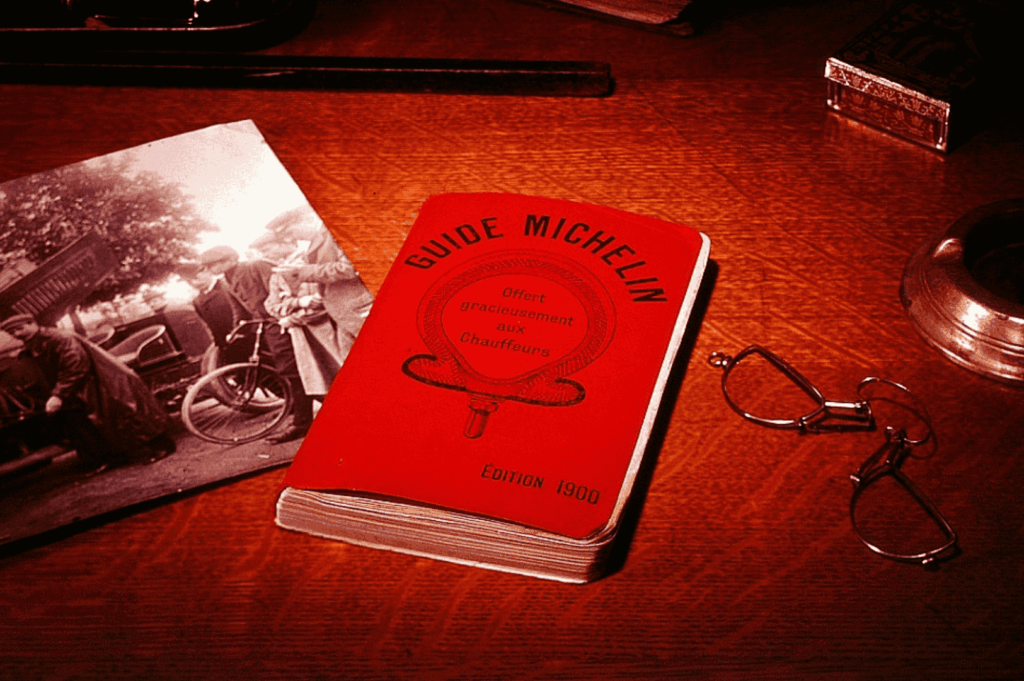
To understand how to earn a Michelin star, one must first appreciate the institution behind it. The Michelin Guide began in 1900 as a simple handbook for French motorists, a clever marketing tool from the Michelin tire company to encourage more road travel.
The focus on food grew, and Michelin introduced its single star rating system in 1926, then expanded it in 1933 to include two and three stars to recognize restaurants with excellent cuisine.
The evaluation process is famously discreet. Anonymous Michelin inspectors, often seasoned former hospitality professionals, visit restaurants multiple times before making a decision. They always pay their own bills and never reveal their identity, ensuring an unbiased assessment. While the ambiance, decor, and service are crucial components of the overall experience, the stars are awarded based solely on the quality of the food on the plate.
The official five criteria for a Michelin star are universally applied:
- Quality of the products: The freshness, rarity, and exceptional nature of the seasonal ingredients.
- Mastery of flavor and cooking techniques: The chef’s technical skill and ability to produce harmonious, distinct flavors.
- The personality of the chef in their cuisine: The creativity, unique vision, and art form expressed through the food.
- Value for money: The quality of the experience relative to its price point for lunch or dinner.
- Consistency between visits: The ability to reproduce the same high standard of excellent cooking time after time.
These five points form the foundation of every evaluation, whether the inspector is visiting a three star restaurant in Paris or one of the celebrated Michelin star restaurants in Singapore.
Types of Michelin Star Ratings
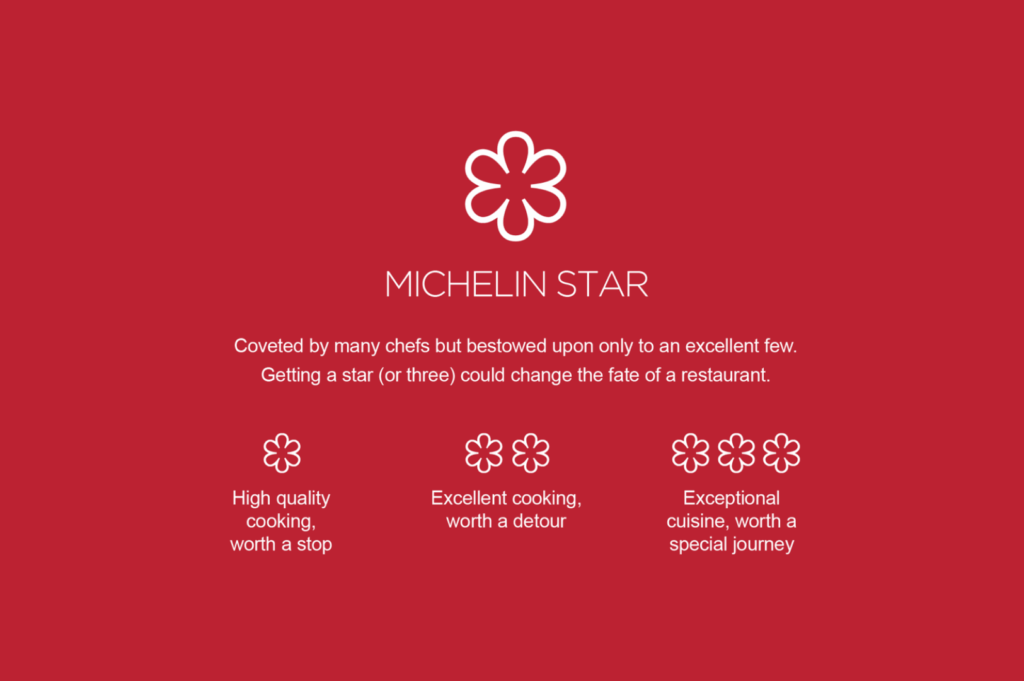
The Michelin Guide is renowned for its rigorous evaluation and prestigious star system, which distinguishes the very best in fine dining. Restaurants can be awarded up to three Michelin stars, each representing a different level of culinary achievement.
- One Michelin Star
Signifies a “very good restaurant” in its category, making it a worthwhile stop for diners seeking quality cuisine. - Two Michelin Stars
Awarded to restaurants with “excellent cooking” that is worth a detour, reflecting a higher level of mastery and consistency. - Three Michelin stars
Reserved for those rare establishments offering “exceptional cuisine” that is truly worth a special journey.
Beyond the stars, the Michelin Guide also recognizes restaurants with the Bib Gourmand, highlighting those that offer excellent value for money without compromising on quality.
The Michelin Green Star is a newer accolade, celebrating restaurants that demonstrate outstanding commitment to sustainability and environmental responsibility.
Understanding these distinctions helps diners navigate the world of fine dining restaurants, ensuring every meal is a memorable experience—whether it’s a one star gem or a three star culinary destination.
The Foundation of Excellence: Kitchen Infrastructure and Systems
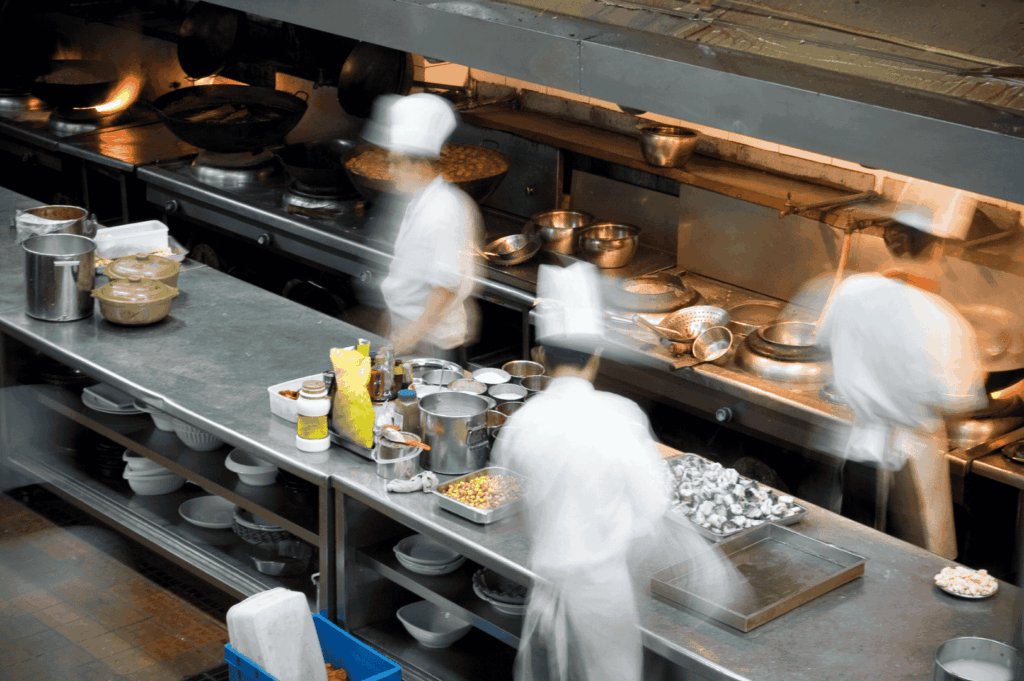
A Michelin-starred kitchen is a theatre of precision, relying on robust infrastructure and operational systems beyond just state-of-the-art equipment. It’s about crafting an environment optimized for efficiency, consistency, and flawless execution under pressure.
Key elements include:
- Logical Workflow: The kitchen layout streamlines the journey of fresh ingredients from receiving to plating, minimizing movement and errors.
- Station Specialization (Mise en Place): The head chef, sous chef, and team prepare meticulously before service, ensuring every component is ready—essential for any aspiring star restaurant.
- Technology and Equipment: Classic cooking techniques blend with technology like sous-vide machines and advanced ovens to achieve consistent excellence.
- Hygiene and Maintenance: Immaculate cleanliness and proactive equipment upkeep reflect discipline and respect, crucial for Michelin inspectors.
For example, Burnt Ends in Singapore showcases an open-concept kitchen where disciplined teamwork around a wood-fired oven exemplifies how well-designed systems become part of fine dining’s art form.
Culinary Innovation vs. Technical Mastery
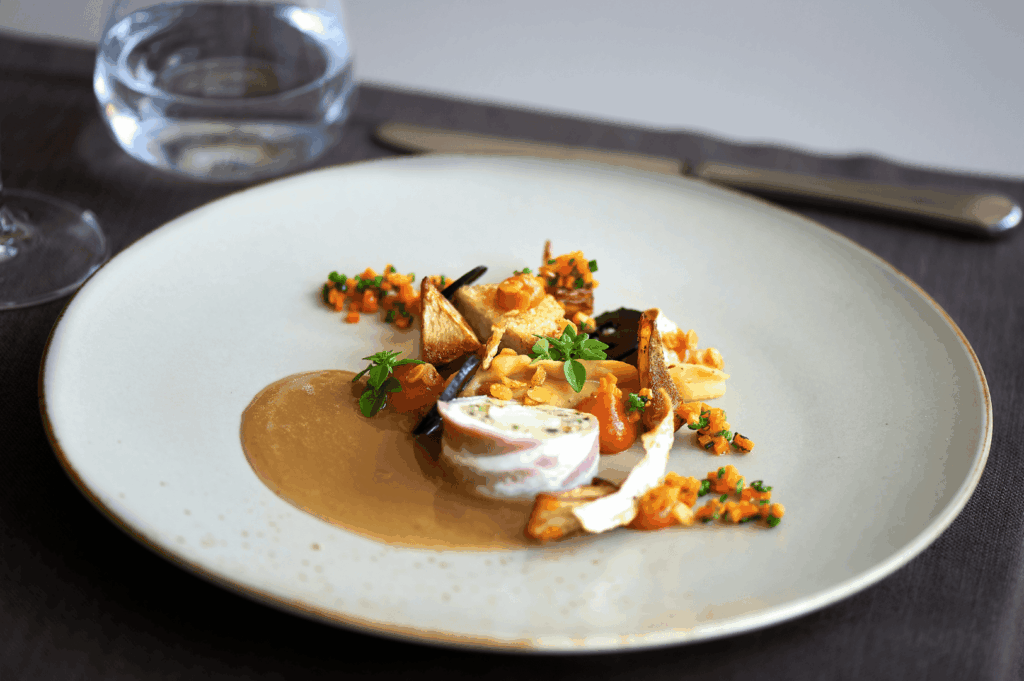
One of the great debates in high-end cuisine is the balance between creativity and classic technique. The truth is, Michelin star restaurants master both.
Technical mastery is the bedrock upon which all culinary innovation is built. A chef must first understand the fundamental rules of cooking before they can effectively break them to create innovative dishes. This means perfecting classic skills: creating a flawless mother sauce, expertly preparing premium cuts of meat, or achieving the perfect emulsion.
This technical foundation ensures that even the most inventive dishes are grounded in solid principles of flavor and texture. For example, Julien Royer of Singapore’s three-Michelin-starred Odette applies impeccable French techniques to seasonal produce, creating great dishes that feel both timeless and modern.
Innovation, then, becomes the chef’s personality on a plate. The chef’s personality is a defining factor that shapes the menu, presentation, and overall dining experience. It is where their heritage, vision, and creativity come to life. This could be through:
- Unexpected Flavor Pairings: Combining premium ingredients in new and surprising ways, such as pairing sea urchin with delicate custards.
- Modernist Techniques: Using spherification, foams, or gels to alter textures and present familiar flavors in a new light.
- Cultural Fusion: As seen at Candlenut, Singapore’s first Michelin-starred Peranakan restaurant, where the chef refines traditional Straits-Chinese cuisine with modern precision. Even Teochew cuisine has found a place in the fine dining world through this lens. Many Michelin-starred chefs draw on global influences, blending techniques and flavors from different cuisines to create innovative and multicultural dishes.
As Chef Owner Emmanuel Stroobant of the two-starred Saint Pierre might attest, creativity without technique is chaos. But technique without creativity has no soul. A Michelin star is found where the two meet in harmony.
The Human Element: Building and Training a Star-Worthy Team
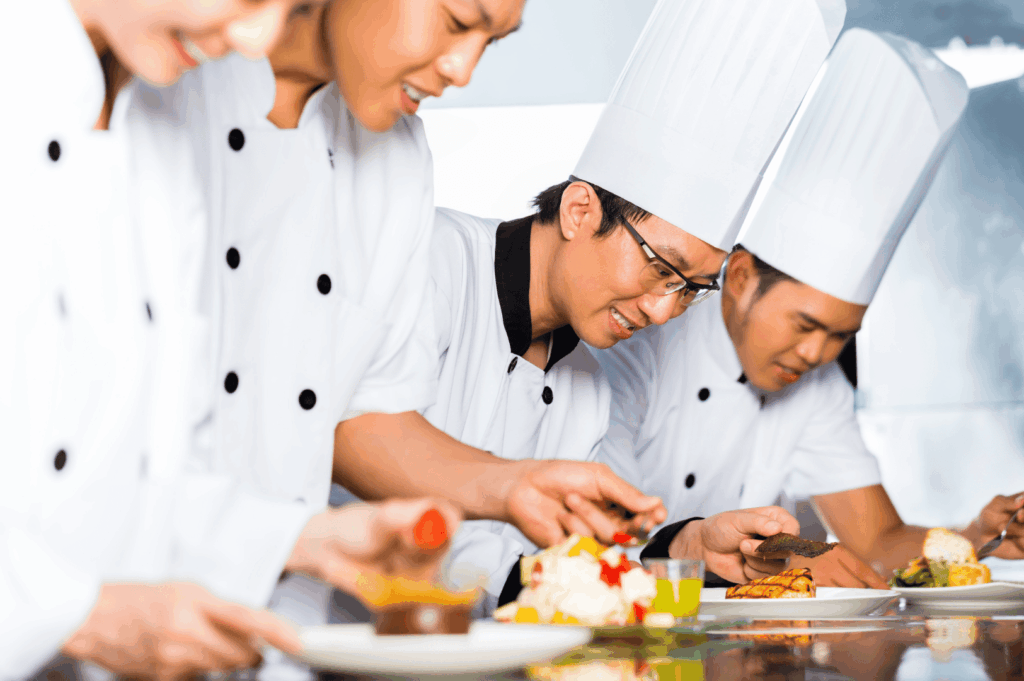
No single chef earns a star alone. It is an award given to a restaurant, and the fine dining establishment is only as strong as its entire team. Building a cohesive, skilled, and motivated team is a critical challenge on the culinary journey to a star.
Recruitment focuses on individuals with skill, passion for gastronomic excellence, strong work ethic, and humility.
Continuous training includes:
- Mentorship: Senior chefs like Chef Denis Lucchi and Chef Christophe Lerouy guide junior cooks, ensuring standards across the brigade.
- Clear Communication: Efficient, respectful communication is essential during service.
- Empowerment and Trust: The head chef sets the vision but trusts the sous chef and station chefs to take ownership, fostering pride and accountability.
- Shared Culture: Everyone, from stewards to Chef de Cuisine, aligns with the restaurant’s mission.
This unity enables a good restaurant to deliver consistently, whether for a complex tasting menu or a concise lunch menu.
Sourcing and Ingredients: The Pursuit of Exceptional Quality
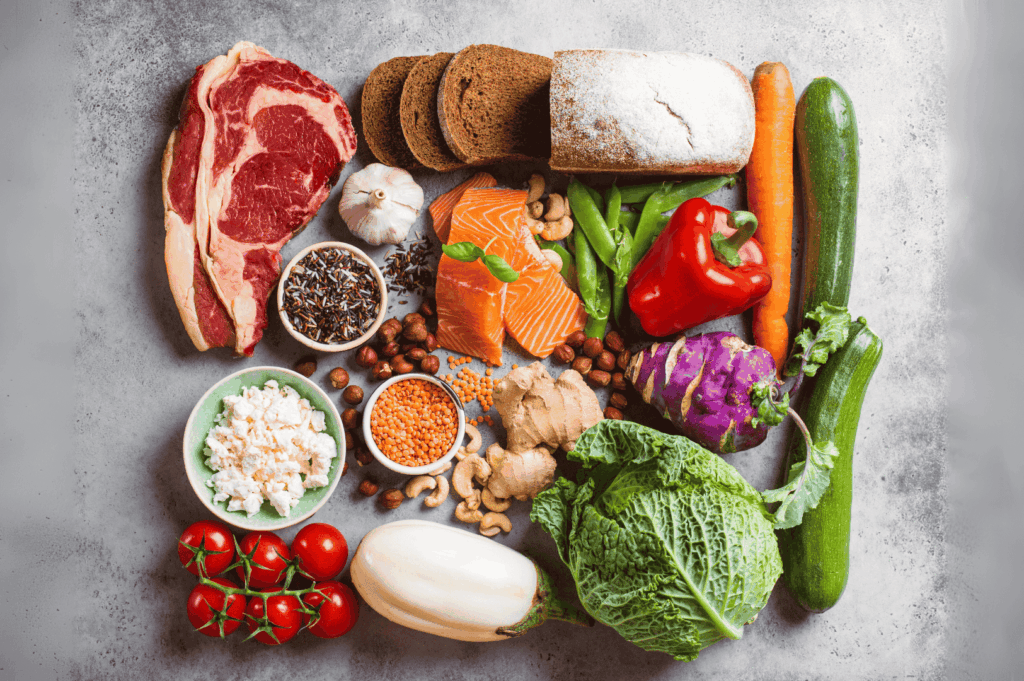
The very first of the five criteria in the Michelin Guide is the “quality of the products.” This is the non-negotiable starting point for all great cuisine. You cannot create extraordinary dishes from ordinary ingredients. The pursuit of the finest ingredients is a relentless quest for chefs aspiring to this level of recognition.
This involves more than ordering from top suppliers. It requires building deep relationships with farmers, fishermen, and artisans.
Chefs like Head Chef Takuya Yamashita of Whitegrass might work directly with producers to source exclusive seasonal produce. They understand the seasonality and terroir of their ingredients intimately.
The team at three-starred Les Amis, for example, is renowned for its access to France’s most exceptional produce, a result of decades-long relationships.
For food enthusiasts, such restaurants are a true culinary haven, offering memorable dining experiences centered on the finest ingredients. The popular hairy crab season, for instance, sees these kitchens sourcing the absolute best.
A commitment to exceptional sourcing means:
Prioritizing Seasonality: The menu changes frequently to reflect the best of what is available. This ensures all the restaurants at this level offer peak flavor.
Traceability and Provenance: Knowing exactly where an ingredient comes from and its story. This narrative often becomes part of the dining experience itself, elevating dishes from mere food to a story.
Respect for the Product: Using the entire ingredient to minimize waste and honor the effort that went into producing it. This philosophy is a key component of the Michelin Green Star, which recognizes sustainability.
This ingredient-first philosophy is the heart of Michelin-level cooking. The chef’s role is to elevate these perfect, fresh ingredients.
Service Excellence: The Front-of-House Experience

While the star is awarded for the food, the overall dining experience profoundly influences an inspector’s impression. Service excellence is about creating a seamless, intuitive, and gracious experience from the moment a guest makes a reservation.
The front-of-house team must be as disciplined as the kitchen staff. This involves:
- Deep Product Knowledge: Servers must know the menu inside and out, from the origin of the premium ingredients to the specific cooking techniques used. They should also be able to speak confidently about wine pairings.
- Anticipatory Service: The best service teams anticipate a guest’s needs. A dropped napkin is replaced instantly; a water glass is never empty.
- Choreographed Teamwork: Service should feel like a ballet. The team moves with grace, clearing and serving plates in perfect synchronization.
- Warmth and Personalization: Despite the formality of fine dining, service should never feel cold. Staff should be adept at reading their guests, making each diner feel personally looked after.
This level of service, seen in top venues from Summer Pavilion to Saint Pierre at Marina Bay, creates an atmosphere of effortless luxury, allowing the guest to relax completely and enjoy their gastronomic journey.
The Business of Michelin: Financial Planning and Sustainability

The pursuit of a Michelin star is costly. Expenses include premium ingredients, skilled labor, top-tier equipment, and elegant decor. A solid business plan is crucial for success. Many world renowned chefs are also savvy businesspeople.
Key financial realities include:
- High Operating Costs: Labor and food costs in fine dining are significantly higher than casual eateries, requiring strict cost control.
- Pricing Strategy: Menu prices must reflect quality and labor, whether for an extensive tasting menu or a lunch menu.
- Multiple Revenue Streams: Diversification through private events or chef’s tables supports operations. Chef Yew Eng Tong and Chef Louis Han may rely on this.
- Investor Alignment: Backers must accept that returns may take time to materialize.
Without sound strategy, even brilliant culinary visions—from Japanese cuisine and nigiri sushi to modern European—can fail.
The Benefits of Dining at a Michelin Starred Restaurant
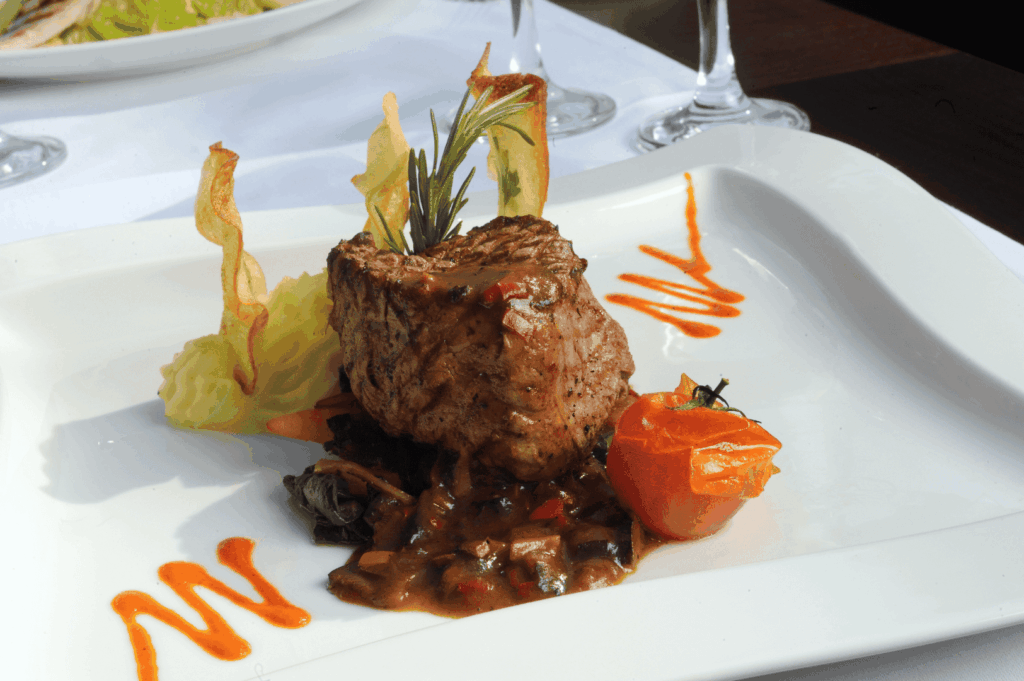
Dining at a Michelin starred restaurant is more than just a meal—it’s a celebration of culinary excellence. These establishments are known for their exceptional cuisine, innovative dishes, and the creative vision of world renowned chefs. Whether enjoying a three Michelin stars tasting menu or a one Michelin star lunch, each dish features premium ingredients and meticulous detail.
Michelin starred restaurants offer an unmatched dining experience, from elegant ambiance to attentive service that anticipates every need. The restaurant provides a journey through flavors and textures, showcasing the chef’s personality and mastery of technique.
For food lovers, dining at a starred restaurant is a chance to explore new cuisines, savor inventive menus, and create lasting memories. Whether celebrating or indulging, a meal at a Michelin starred restaurant is an experience that stands apart—embodying the spirit of the Michelin Guide and its pursuit of gastronomic excellence.
Beyond the Star: Maintaining Excellence and Planning for the Future
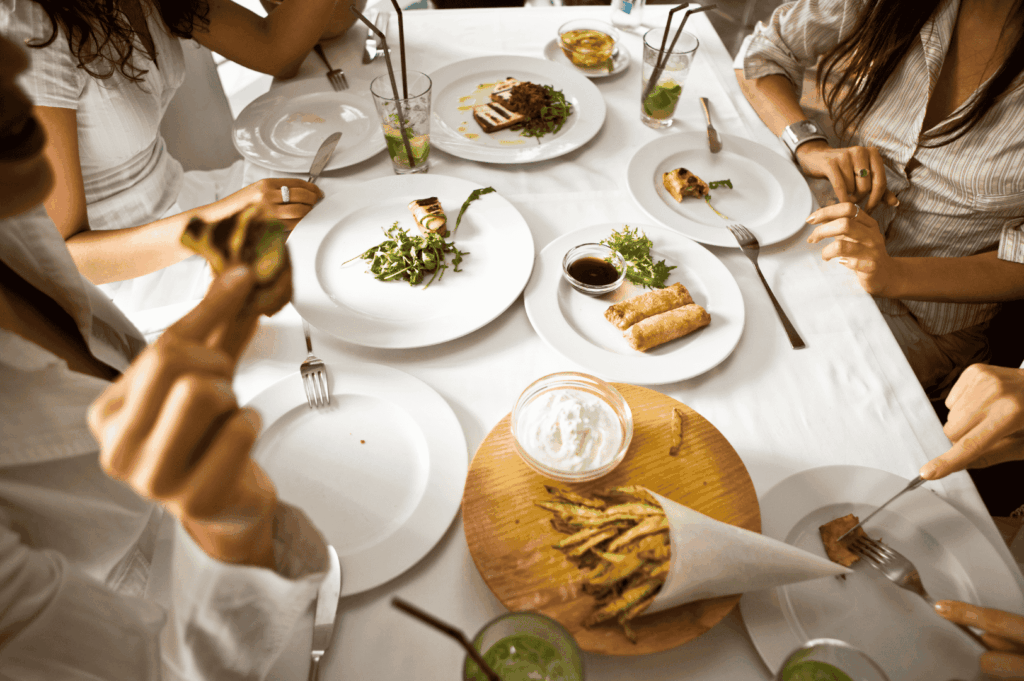
Earning the first Michelin star is not the finish line; it is the starting line of a new race. The pressure to maintain, and perhaps gain another star—or even two stars to reach the pinnacle of three stars—is immense. The key is to treat the award as a validation of the systems and culture you have already built. Singapore’s vibrant culinary scene, renowned for its world-class dining, sets a high standard for excellence and innovation.
Maintaining excellence involves:
- Resisting Complacency: The team must continue to push boundaries. The drive that earned the first star must not fade. The journey from one star to two michelin stars is even more demanding.
- Managing Expectations: The star brings new scrutiny from diners and critics. Every dinner service must live up to the heightened expectation.
- Leveraging the Brand: A Michelin star is a powerful marketing tool. The restaurant offers a proven mark of quality that attracts talent and patrons. Prestigious locations like ION Orchard in Singapore are home to Michelin-starred restaurants, demonstrating how a prime address can enhance reputation and ongoing success.
- Staying True to the Vision: Amid the pressure, it is vital to stay true to the core philosophy that brought success. Chasing trends can be a recipe for losing what made the restaurant special.
Singapore is also home to the world’s first Michelin-starred hawker, a testament to the city’s unique achievements and global distinction in the culinary world.
The journey to culinary greatness is a marathon. The pursuit of a Michelin star provides a framework, pushing chefs to achieve their highest potential. The true reward lies not in the star itself, but in the daily commitment to the craft.
Focus on creating exceptional dining experiences for every guest, every time. If you do that with passion and precision, the accolades, from a Bib Gourmand to three Michelin stars, will follow.
